Ta fade acne scarring can be a real pain in the back. One of my main concerns beside adult acne is fading the spots it leaves behind. The discolouration occurs after the inflamed spot has healed, and although harmless, it’s not aesthetically pleasing.
In this post, I want to touch up a little bit on the products in my routine that have helped me battle hyperpigmentation. I haven’t won the battle yet, but I am happy to have all of these in my arsenal.
Disclaimer: recommendations are based on my own experiences and one product might work for me but not for you. Please do your research to further decide if this is something you wish to try.
Vitamin C – a most powerful ingredient
I already lost count to how many different Vitamin C serums I have tried. Serums I had to keep in the fridge to keep them fresh. Serums that were silicone suspensions and felt suffocating. You name it.
Vitamin C is a powerful antioxidant that prevents ageing and harm from free radicals. It will promote skin cell regeneration and collagen production, thus fade acne scarring.
L-ascorbic acid, or simply Vitamin C, is a tricky ingredient. It is unstable in water solutions. It must be kept out of direct sunlight or high temperatures. There are a variety of serums out there to choose from, but you have to keep in mind they are finicky. Worse yet, once oxidized (changed in colour) they are completely useless.
I tend to gravitate to more stable solutions nowadays, especially to the new vitamin c derivative: ethyl ascorbic acid. This ingredient proves to be highly stable and does not oxidize over time. My current favourites are The Inkey List 15% Vitamin C and EGF, and also the 30% Vitamin C which is a silicone suspension (more tricky to work with). I also love the Melano CC essence. Unfortunately, there is no way to know the dose of l-ascorbic acid in it. This is typical of Japanese products, not listing the %.
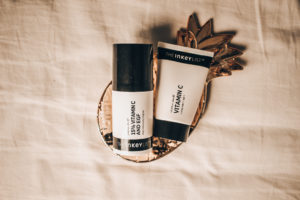
Now I am eyeing the Medik8 vitamin c serums. I love always trying new products even if I have a list of favourites.
Higher % means more powerful but also more sensitizing so start low. You can use a Vitamin C serums in the morning before your SPF as it also has sun protecting properties. But you must diligently use the sunscreen with it otherwise it’s pointless.
Retinoids – your acne battling friends
Retinoids, or Vitamin A and its derivatives, is one of those ingredients often promoted to an older audience because of its anti-ageing properties. However, it is an excellent ingredient for acne-prone skins. It speeds up the skin cell turnover, which in turn fades hyperpigmentation. It also battles texture and acne, especially the cystic type.
I have had amazing results ever since I started using retinoids in my routine.
Like with Vitamin C, there are several different types of Vitamin A:
- Retinol – the natural form of Vitamin A and the one with the least side effects (sensitivity, peeling of the skin, etc.). But also the one that takes longer to show effects.
- Retinoid esters (retinyl palmitate, retinyl acetate, and retinyl linoleate) – these are the weaker forms of Vitamin A and a good starting point for beginners
- Adapalene or Differin – excellent treatment for acne as it also fights inflammation. Personally didn’t have great result with it.
- Tretinoine – this is a synthetic form of retinol and much more powerful. It is prescription only. Tret’ works much faster and the result can be seen very quickly. This is what I have been using for the past 3 months and love the results!
After this, you have Accutane, prescription only. Yes, it’s also a retinoid, which is the next step if tretinoin doesn’t work. It has worked wonders for many people.
Retinoids should be used in the evening routine. I strongly insist on you using a sunscreen in the morning to protect the new skin cells.
If you struggle with particularly severe forms of acne I recommend you seek a dermatologist and get prescription medication. Don’t let it get to the point of it destroying your precious skin.
Niacinamide
Niacinamide, a form of Vitamin B. I feel like we have many vitamins here. Anti-inflammatory, soothing, sebum controlling, and also, melanin inhibiting. Niacinamide has an effect on the melanin-producing cells and can help prevent hyperpigmentation. It will not stop melanin production altogether, but it will interact with the melanin transferring cells, and slow the process.
Azelaic acid
Azelaic acid is a mild form of acid that doesn’t cause irritation and can be used for gentle skin cell turnover. It has anti-inflammatory and antimicrobial properties, which makes it ideal to fight mild forms of acne.
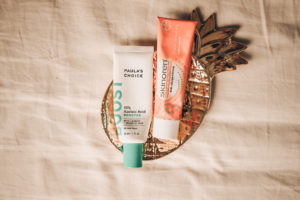
This is new to me as I have never used this ingredient before this year. I started out with the Paulas’s Choice 10% Azelaic Acid but then moved to a prescription one, with 20% azelaic acid. I can tell you, 20%, is irritating even my skin, which can withstand almost anything.
However, adding this in my acids arsenal has proven to be a good decision. I did get a more even-looking texture, and a little bit of help to cure my breakouts and reduce the spots left behind. As I said, I believe this is aimed at mild forms of acne, not severe cases.
Tranexamic acid – new promising ingredient to fade acne scarring
This is my new favourite ingredient of them all. Tranexamic acid is proving to be a very effective ingredient in fading post-inflammatory hyperpigmentation. As an added bonus it is anti-inflammatory, decreases UV sensitivity, and helps restore the skin barrier. It actually blocks the transfer of melanin into the scarring tissue.
I have recently added the newest release from The Inkey List, the Tranexamic Acid 2% Night Treatment. Good Molecules has also sent me their Discoloration Correcting Serum, with 2% of a more advanced form of tranexamic acid.
I am beyond excited to see the long-term results.
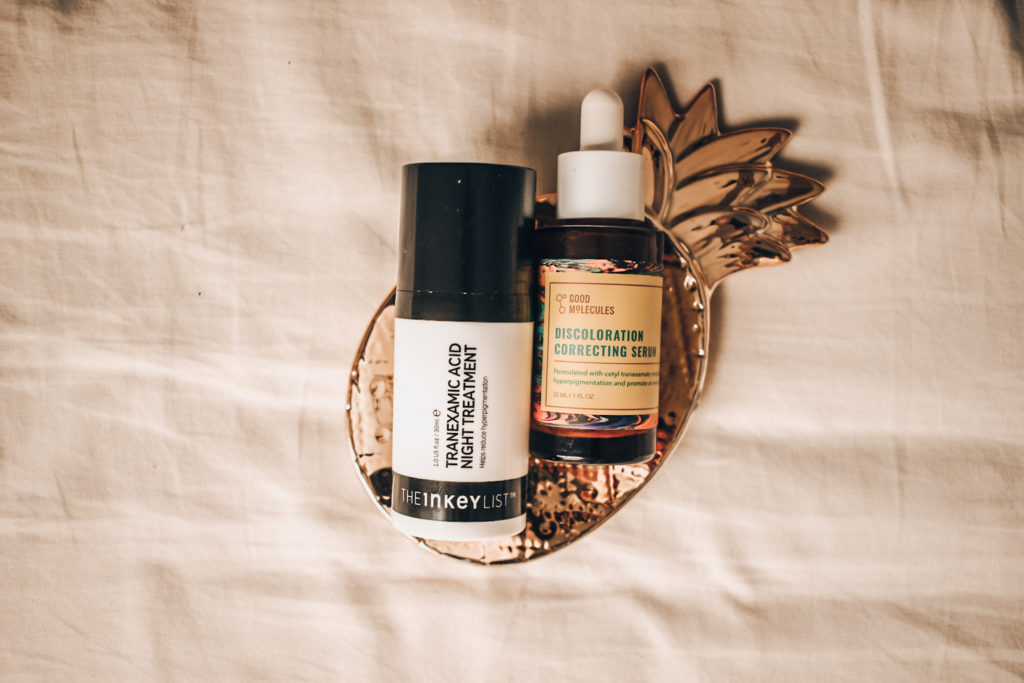
AHAs/BHAs
I have touched upon AHAs and BHAs both in my skincare routine post and exfoliation post, so I won’t go too much in-depth here. Both acids promote skin cell turnover, which helps fade acne scarring. The whole process of exfoliation helps fade acne scars as new cells are created to replace the old ones.
Professional treatments
I have recently had a micro-needling session and I talk all about my results in here. Micro-needling can help fade old stubborn acne scarring, but also deeper scars, know as ice picks.
There are also peel treatments that are offered in almost every beauty institute, which are very potent and can fade light scaring. I have never tried one but a tempted to. The problem is that you have to avoid the sun at all costs and your skin will peel off, which is not a pretty sight.
SUNSCREEN!
It is all pointless to use all the ingredients in the world to fade pigmentation if you don’t protect against the sun. The sun impairs the healing process and makes the dark spots darker. Protecting the skin from the damaging UV rays is one of the best things you can do for yourself, acne or no acne!
I hope this post has helped you in any way. Maybe you have discovered some new ingredients, or maybe you are inspired to try more.
Follow me on Instagram for more product reviews, useful tips, as well as snippets of my daily life.
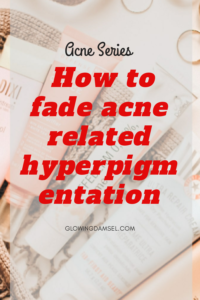
Some of the links listed above are affiliate links, meaning that if you click through and decide to make a purchase, at no additional cost to you, I may earn a commission.

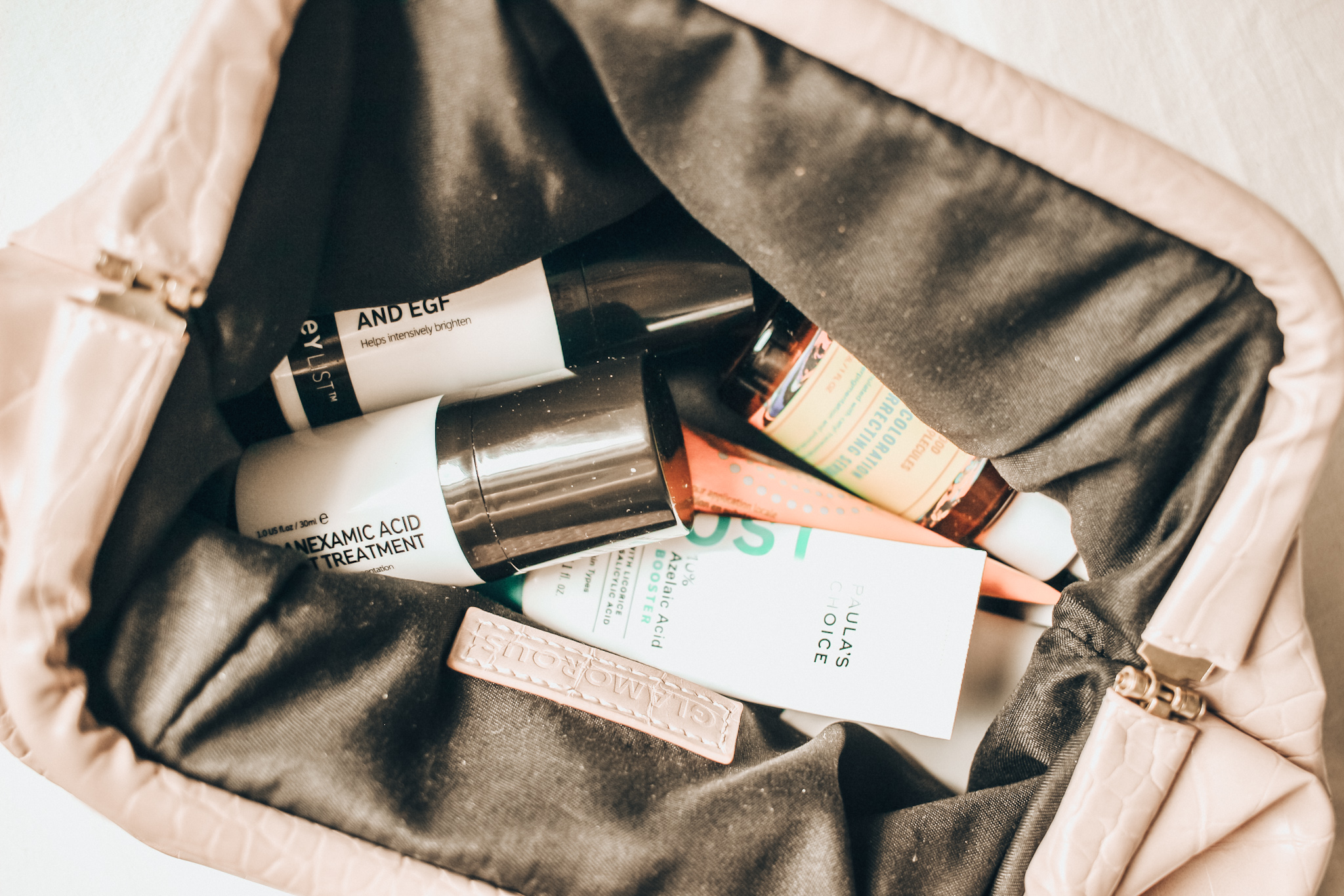


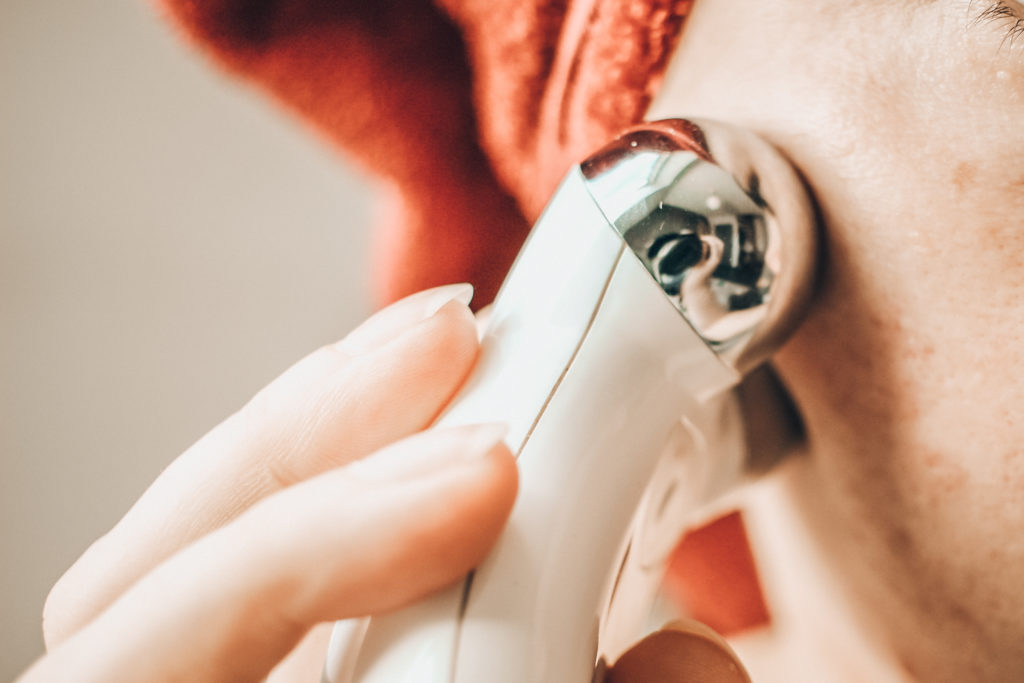
Kajal
21/09/2020 at 6:59 PMLove these! Definitely true about sunscreen! I also want to do more treatments to fade my marks but I’m also scared!
Skincare on a budget - Good Molecules review - Glowing Damsel
09/10/2020 at 1:55 PM[…] How to fade acne related hyperpigmentation […]
It's time to stop believing these 6 skincare myths -
19/10/2020 at 10:28 PM[…] This is by far the worst of the skincare myths. Just invest in a good Vitamin C serum, or opt for Tranexamic acid. I talk more about lightening dark spots here. […]
Why you need to wear sunscreen everyday -
22/10/2020 at 1:13 PM[…] process of the skin, and any blemishes will take longer to heal. Think of acne. Furthermore, scars and discolouration will take even longer if ever, to […]
Skincare on a Budget - How Good Is The Inkey List | Glowing Damsel
23/11/2020 at 11:38 AM[…] This Tranexamic Acid Treatment has notable ingredients, such as 2% tranexamic acid, 2% acai berry extract, and 2% vitamin c. All of these work in unison to promote an even skin tone. If you want to know more information on Tranexamic Acid I have a breakdown in this post. […]